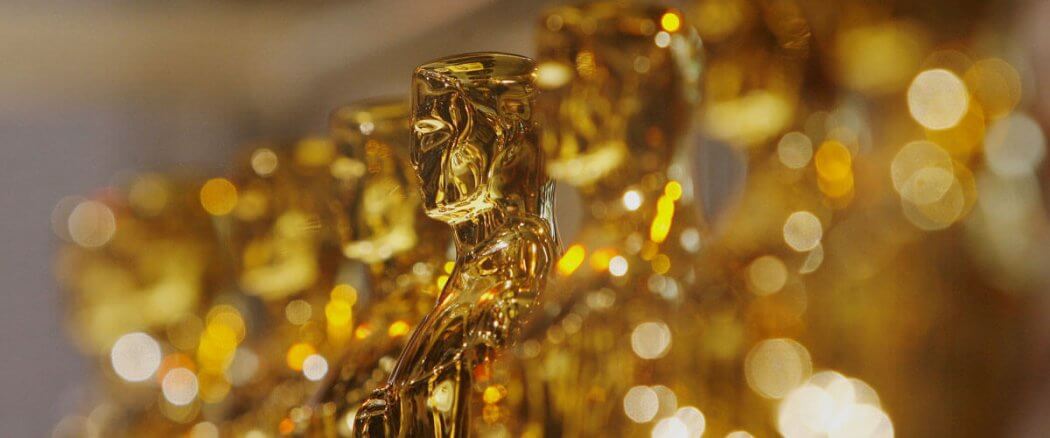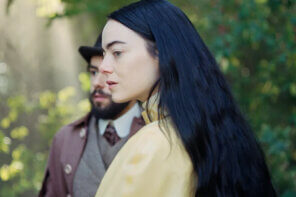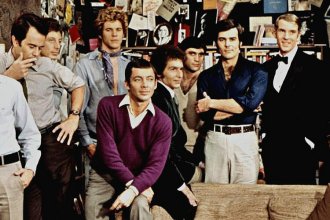The 2017 Oscars will be a hard year to top. Not only did the two best movies of the year duke it out for Best Picture, but they were both handed the award in an unprecedented envelope mix-up. Unfortunately for La La Land, Moonlight was the true winner of the evening. But for those of us keeping score at home, justice was served. The Oscars got it wrong and instantly made it right. Moonlight was indeed the best movie of 2016.
There will be little chance of an envelope flub this year. The Academy has no doubt made ample changes to protect them from a repeat. Thankfully, that’s not the only thing they’ve improved. Following the #OscarsSoWhite campaign of 2016, the leadership formed a plan to double their women and minority membership over the next three years. It seems to be working. In 2016, there were no actors of color nominated. This year, there are four. Furthermore, Get Out — a horror/comedy that tackles racism in America head-on — scored nominations for Best Actor, Best Director, and Best Picture. There is still a long way to go, but it’s refreshing to see diverse voices represented when it counts.
And now it’s time to get ready for the big night. Our Oscar parties are scheduled. The decorations are waiting in the wings. The only thing left to see is which names will be called. But the question of who will win has never interested me as much as who should win. Why waste time predicting which Oscar campaign will win over voters? That’s just money and politics. I’d rather talk about which nominees are most deserving of the gold.
So without further ado, I now present my Oscar picks for 2018. They may not match up with the results, but the Oscars have always been about more than winning. This is a night where millions of people from countries all around the world come together to celebrate the movies. On that front, we’re all winners.
Best Adapted Screenplay
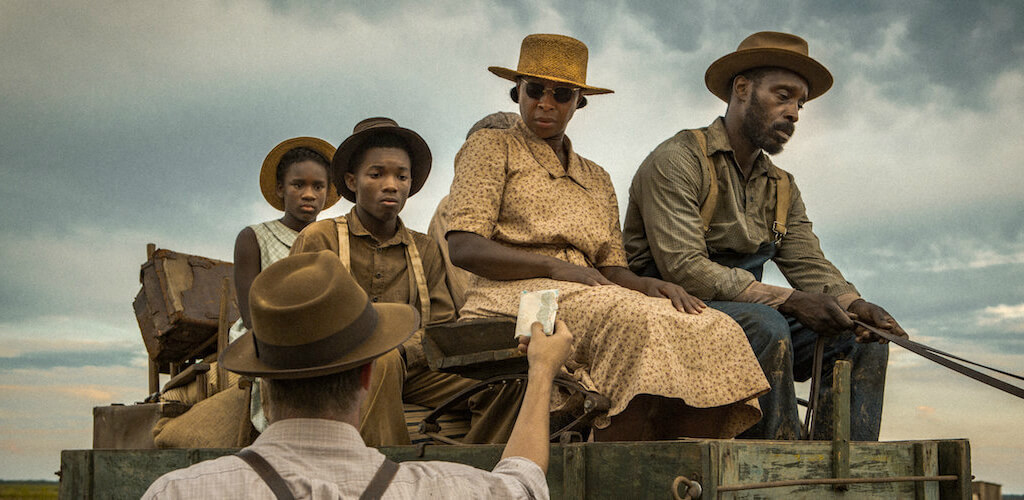
Call Me by Your Name
The Disaster Artist
Logan
Molly’s Game
Mudbound
The Academy almost did the right thing by not nominating The Disaster Artist for anything, but I guess they felt the need to honor the awards buzz with this consolation prize. James Franco does a decent Tommy Wiseau impression, but we never figure out what makes him tick. The movie feels like a two-hour SNL skit — all surface and no depth. It’s certainly better than A Night at the Roxbury, but nowhere near good enough for an Oscar.
Screenwriter Aaron Sorkin needs to stop being told how great he is. I think it’s gotten to his head. Molly’s Game is filled with bloated scenes of “clever” Sorkin banter, but that’s not what’s interesting about the movie. What glues us to the screen is watching Molly run an underground poker ring while trying to stay one step ahead of celebrities, the FBI, and Russian mob. Sorkin doesn’t seem to know this, because the majority of the film is dedicated to courtroom proceedings, conversations between Molly and her lawyer, and a half-cooked subplot involving Molly and her dad. All of this leaves plenty of room for the back and forth dialogue Sorkin is known for, but it feels boring and self-indulgent when all we want to do is get back to Molly’s game.
The first hour of Logan is the antidote we need for our current state of superhero overload. From the moment Logan wakes up in the back of his limo, we know we’re in for something different. Rather than the brash animal-man speaking in polite gosh-darns, Logan lets the language fly. Rather than bloodless violence, we see the gruesome effect of Logan’s rage. Then Logan drives to his hideout in the middle of the desert and a quiet apocalyptic tone sets in. The first hour is in many ways a post-superhero movie — sparse, contemplative, and powerful. If only director James Mangold could have held on to the magic. Eventually a plot arrives about sadistic scientists and mutant kids and we’re right back in summer Marvel territory. But I blame the execution more than the writing. Mangold taps into something special here. May future superhero movies follow suit.
The script isn’t what makes Call Me by Your Name great, but it certainly helps. The movie is far more about feelings than words. And yet, there are small moments of dialogue that prove unforgettable. The best example occurs at the end of the film when Elio talks with his dad. Elio walks into the room defeated after a summer wrestling with newfound desire and confusion. He’s kept all this to himself, perhaps out of embarrassment, perhaps fearing rebuke. To his surprise, he’s met with compassion. His dad once walked in his shoes and he has some advice: “We rip out so much of ourselves to be cured of things faster than we should that we go bankrupt by the age of thirty…but to feel nothing so as not to feel anything — what a waste.” These are powerful words for Elio, and for a Church that has too often vilified the body at the expense of the soul.
Voice-over can be a lazy tool, but it can also be tremendously powerful when used effectively. Mudbound is a prime example of the latter. The voice-overs switch characters throughout the film, offering diverse perspectives. They’re not explanations so much as poetic meditations. When Laura describes her home, she says “When I think of the farm, I think of mud and crusted knees and hair. I dreamed in brown.” When Hap talks about the reality of black people working fields in the south, he says “They worked this land all their life. This land that never would be theirs. They work until they sweat it. They sweat it until they bleed. They bleed until they die. They die clawing at their heart.” Director Dee Rees is tapping into the power of Malick here — thoughts and prayers offered up to the universe. But unlike Malick’s recent efforts, Rees is also telling a story. The voice-overs add novelistic heft to the events that transpire and together make Mudbound the best adapted screenplay of the year.
Best Original Screenplay
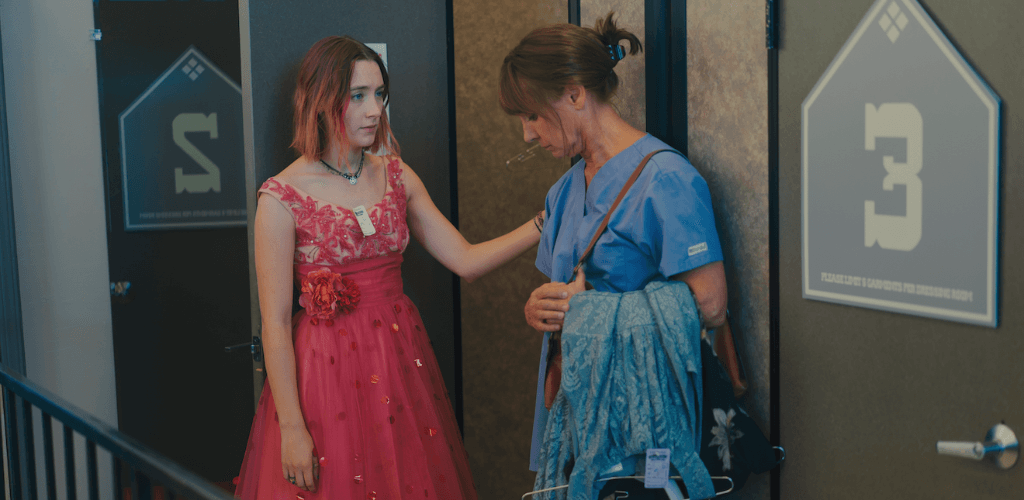
The Big Sick
Get Out
Lady Bird
The Shape of Water
Three Billboards Outside Ebbing, Missouri
Writer/director Martin McDanagh isn’t known for his subtlety. Previous entries like In Bruges and Seven Psychopaths were brash, violent, and profane. The difference with Three Billboards Outside Ebbing, Missouri is that McDanagh is tackling topics that don’t fit well with his irreverent style. There’s nothing funny about prejudice and racism, but I’m not sure McDanagh knows that. His script mocks black people, little people, and Catholics to name a few. Of course McDanagh would take objection to that. After all, it’s his characters that say these things, not him. But it’s hard not to think he’s having his cake and eating it too. McDanagh wants us to laugh at the fact that Sam Rockwell’s character routinely beats up black suspects and doesn’t think it’s wrong. After all, he’s a lovable racist who starts to see the error of his ways in the end. He wants us to laugh when Francis McDormand kicks three high school students in the genitals to show she means business. After all, her daughter was murdered and she doesn’t have time for niceties. The whole thing made me feel queasy after a while, and the tiny stabs at redemption weren’t enough to wash out the foul taste. A deft hand is needed when you’re tackling sensitive issues that are a daily part of our real-life conversations. With Three Billboards, McDanagh seems to have bitten off more than he can chew.
I have some qualms about Get Out as a Best Picture contender, but I have no problem whatsoever with Jordan Peele’s script getting the love it deserves. Peele accomplishes something extraordinary here. He taps into the cultural zeitgeist by addressing modern-day racism head-on, all through the vehicle of a horror/comedy package that manages to simultaneously educate and entertain. Take the opening scene, for instance. We begin with a familiar horror trope: a man walks through a creepy locale with danger lurking just around the corner. Except the locale here is white suburbia and the man is scared because he’s black. Peele continues to use horror conventions to his advantage, culminating most poignantly with his idea of the “sunken place” — a reality every black person in American can relate to but didn’t have the term for. Peele’s script highlights the impact film can make by speaking truth through story. We buy a movie ticket to be entertained, but the best chance for growth is when our guard is down. Get Out adds a layer to the race conversation in a way a Facebook post never could.
On paper, The Shape of Water is a classic story. Two social outcasts find love in each other’s arms. But these aren’t just any social outcasts. One of them is a mute cleaning woman and the other is a giant fish. Welcome to another adult fairy tale from the mind of Guillermo del Toro. The film is far from perfect, but the faults lie in the execution more than the script. This was always destined to be a quirky film, but the words on the page hum with potential. Not only are there profound parallels in the lives of the two love interests, but there are modern-day implications as well. This is seen most clearly through Michael Shannon’s government agent Richard. When Richard looks at both his mute employee Elisa and the amphibian-man he’s captured, he sees inferior species worthy of domination. They are not deserving of the same privileges he enjoys. He even uses religion to justify his bigotry, telling Elisa’s cleaning partner about the creature, “We’re created in God’s image. You don’t think that’s what God looks like, do you?” But when the creature looks at Elisa, he sees nothing but beauty. Elisa tells a friend, “When he looks at me the way he looks at me, he does not know what I lack or how I am incomplete. He sees me for what I am, as I am.” That’s the beauty of unconditional love, and it’s what makes this unconventional love story leap off the page.
The surprise gem of the summer was Kumail Nanjiani’s The Big Sick. Nanjiani wrote the script with his wife Emily based on their real-life romance that involved Kumail falling for Emily while she was in a coma. There is a refreshing authenticity to Nanjiani’s writing. For starters, it’s laugh-out-loud funny. My favorite interaction comes when a character asks Nanjiani about 9/11 (Nanjiani’s response: “What’s my stance on 9/11. Oh um, anti. It was a tragedy. I mean we lost 19 of our best guys.”). But it’s also a story that eschews conventional romantic comedy cliches in favor of reality. Nanjiani doesn’t follow any formula we’re used to. In fact, when the big moment comes that’s supposed to tie everything together, we’re left as disappointed as Kumail. This is a script that earns its payoffs, which makes them that much more satisfactory when they eventually arrive. But The Big Sick’s secret weapon is the characters of Emily’s parents played by Ray Romano and Holly Hunter. These could have been throwaway roles in another writer’s hands, but Nanjiani gives them three dimensions. Their presence adds charm and perspective, and grounds the film even deeper in reality. This is a remarkable debut by any standard. Hopefully Nanjiani will continue to breathe new life into tired genres now that every door in Hollywood is open to his talent.
There is no script from 2017 that can match the magic of Greta Gerwig’s Lady Bird. We’re hooked from the opening scene where Lady Bird McPherson and her mother Marion are crying to an audio book of The Grapes of Wrath. The CD ends and, for a moment, we glimpse a shared peace. Then they start talking and we see their complex relationship emerge. The scene closes with Marion voicing something parents say and later regret: “You should just go to City College with your work ethic. City College and then to jail and then back to City College. Maybe you’d learn how to pull yourself up and not expect everyone to do everything for you.” Lady Bird responds by rolling out of the car, leaving her mother screaming in horror. We can’t help but laugh. In one scene, Gerwig has told us everything we need to know. That’s the power of her writing. She can make us laugh and cry and relate all in the span of five minutes. Lady Bird is screenwriting at its finest and it should be more than enough to earn Gerwig her first Oscar.
Best Visual Effects
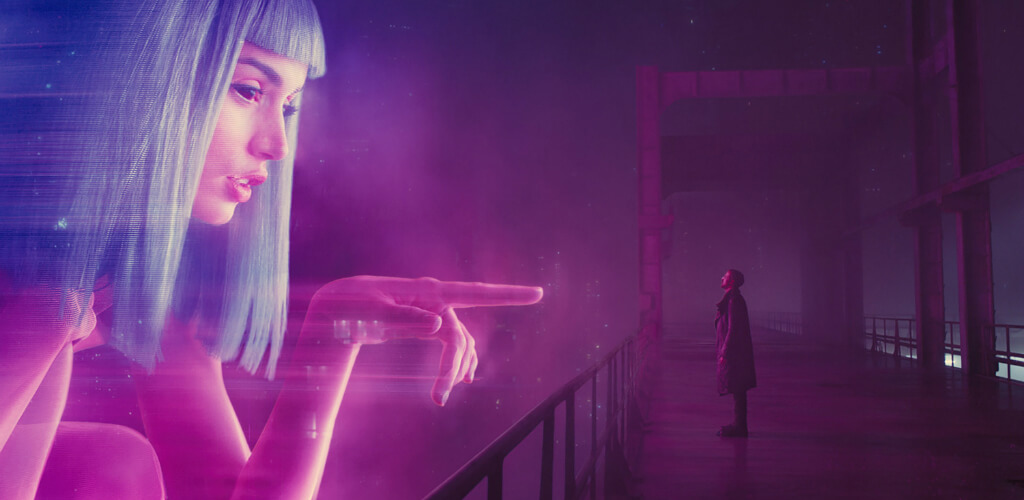
Blade Runner 2049
Guardians of the Galaxy Vol. 2
Kong: Skull Island
Star Wars: The Last Jedi
War for the Planet of the Apes
Let’s get my rant out of the way. The fact that Star Wars: The Last Jedi is nominated for this award is nothing short of a travesty. What does it mean for a movie to have great visual effects? It means that we can’t tell the difference between what’s fake and what’s real. If that’s the litmus test, Jedi has a problem because Snoke looks like a Pixar character. Is Disney running short on funds? Can they not afford to go the extra mile? Why not just forget CGI altogether and use prosthetics? No one is accusing Emperor Palpatine from Return of the Jedi of looking fake. Why? Because they used practical effects. The result is that a Sith Lord from the 1970’s looks more real than a Sith Lord from 2018. The only thing that can redeem this awful mess is if the online fan theory comes true that Snoke was a hologram the entire time. If that’s the case, I’ll gladly eat my words. If not, this visual effects team doesn’t belong anywhere near the Oscars.
Guardians of the Galaxy Vol. 2 and Kong: Skull Island are pretty much the same from a visual effects standpoint. Nothing stands out as terrible, but there are a number of scenes that carry the whiff of green-screened CGI. When our protagonists are running through the forest as King Kong and a Skullcrawler are fighting around them, it’s no secret they’re on a sound stage. The same goes for Guardians and Co. exploring Kurt Russell’s planet with millions of flowers blooming around them. I realize CGI is necessary to create the shot, but I wish visual effects artists would try harder at blending in practical effects so the result is seamless. I can’t tell you what’s fake and what’s real when the T-Rex busts out of his pen in the original Jurassic Park. That was in 1993. Somewhere along the way, digital effects companies became so enamored with computers that they lost the plot. As Ian Malcom would say, they became “so preoccupied with whether or not they could, they didn’t stop to think if they should.”
Of all the movies with obvious CGI creations, War for the Planet of the Apes fares the best. When we close in on the apes, the level of detail is absolutely stunning. I can’t imagine the work that went into each individual hair on their bodies, but the crowning achievement is their eyes. They’re more than just eyes — they’re digitally created souls. A lot of this is helped by Andy Serkis’ motion-capture of course, but Serkis played Snoke too and there is no comparison. Clearly, it takes more than just motion-capture technology to simulate reality. There are only two things holding back the apes from perfection. First, in the wider shots when they’re getting on and off their horses, there’s a slight jerky quality to their movements that feels fake. Second, when they talk, their mouths carry the faintest hint of computer trickery. I’m being nit-picky of course. At the end of the day, what the crew behind Apes has accomplished is ground-breaking and they are well deserving of this nomination.
By my standard of visual effects excellence, Blade Runner 2049 is the best of the lot. Every CGI element is seamless. That’s especially impressive considering the breadth of the task. In essence, director Denis Villeneuve had to create a brand new world. The year is 2049. Technology is everywhere, Replicants walk among us, holograms are our in-home lovers — there’s a digital creation needed in every single shot. And after three paragraphs of complaining about the need for a practical/digital blend, I’m happy to report that 2049 nails it. Take the haunting scene with Jared Leto where a new Replicant is born. She’s birthed in goo only for Leto to admire her and violently destroy her. It’s a haunting scene that feels so real I still get chills thinking about it. Or how about re-creating Sean Young from the original Blade Runner? It’s a CGI product, but she looks exactly like she did in the first film with brand new dialogue and actions specifically created for this movie. Take note Rogue One and The Last Jedi: this is how you create a digital character. By the end of the film, we’ve glimpsed the future and we’re terrified. That’s the power of great special effects — they’re the invisible glue that allows us to see things we’ve never seen before. Bravo, Blade Runner 2049. Grab that Oscar. And while you’re at it, schedule a lunch date with your colleagues to show them how it’s done.
Best Cinematography
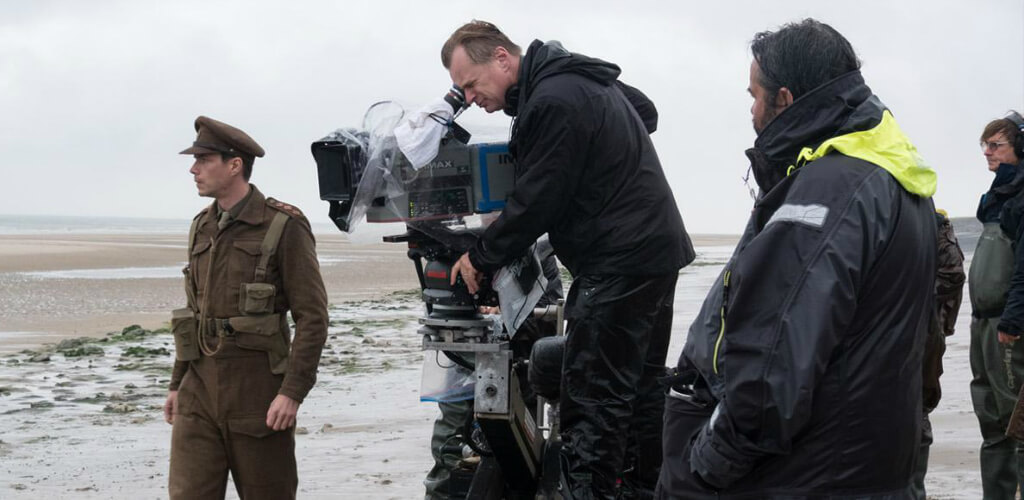
Blade Runner 2049
Darkest Hour
Dunkirk
Mudbound
The Shape of Water
Cinematography isn’t the first thing that comes to mind when I think of Darkest Hour. The majority of the film is tight shots of Gary Oldman talking. There are a few flourishes, like a slow motion pan through the London streets or the intimate shot of a bomb falling. Cinematographer Bruno Delbonnel also makes effective use of the dank, claustrophobic lighting. But overall, I wouldn’t call this a visual marvel.
The same is true for Mudbound, although the visual palette here is far more pronounced. Every frame is washed in Sepia, highlighting the endless brown the characters are trapped in. The shots of war we see are fairly pedestrian, but then this isn’t a war film. The heart of the movie lies in the mud, and cinematographer Rachel Morrison pulls us in until we feel the weight of the grime.
Blade Runner 2049 fares better in this category. The visuals are brimming with mood and wonder. Every setting has its own color orientation. The city streets are washed out in rainy blue. The temple where Jared Leto’s character lives is a brilliant yellow. But the most impressive stretch is Ryan Gosling’s visit to the ruins of Las Vegas. Here the camera glides through the dusty red of forgotten pleasure. Statues of naked women stand tall in the nothingness — the last remnants of a city that ate itself alive. Blade Runner 2049 is a visual feast at every turn and the cinematography is our roaming guide on the journey.
The Shape of Water is the first film of the pack that feels truly worthy of an Oscar. From the first shot of Sally Hawkins floating in water with the objects of the living room bobbing around her, we know we’re in for pure visual magic. The cinematography blends with the exquisite production design to make each scene burst with color and warmth. The highlights come in the first act as the camera glides along to Sally Hawkins’ daily routine. Hawkins’ character is fond of old song and dance musicals, which is precisely what the film feels like in the early stretches. Unfortunately, director Guillermo del Toro eventually plunges the tone into darkness which loses a bit of the visual energy. But that’s not cinematographer Dan Lausten’s fault. He dutifully complies with the shift, bringing a moodier palette to the second half. Del Toro’s flaws aside, this is truly a technical accomplishment worthy of the gold.
Unfortunately for Lausten, Christopher Nolan also made a movie this year and everyone knows what that means. There is no director working today more obsessed with the cinematic experience than Nolan. And with Dunkirk, he’s reached the pinnacle of his achievements on that front. The film was shot with IMAX 70mm film and for those of us who had the pleasure of seeing it in that format, nothing this year compared. But it’s not just the film type that makes Dunkirk special, it’s the way Nolan tells the story. The movie consists of the events of Dunkirk from three different vantage points, each spread out on the timeline and coinciding at the end. All three are shot with intimacy and immediacy — Nolan plunges us into the center of the madness by land, air, and sea. We go from being stranded on a bridge as missiles are raining down, to a first person shot of an airplane engaged in a firefight, to a boat in the middle of the ocean racing to the battle — all in crisp, immersive IMAX beauty. What Nolan achieves with this film is the blueprint for a new era of movie magic. Dunkirk was the theater experience of the year, and that should be enough to make cinematographer Hoyte van Hoytema an Oscar winner.
To Be Continued…
Check back next week for part two of our Oscar coverage as we pick Best Supporting Actress, Best Supporting Actor, Best Actor, Best Actress, Best Director, and Best Picture!
UPDATE: Part Two

